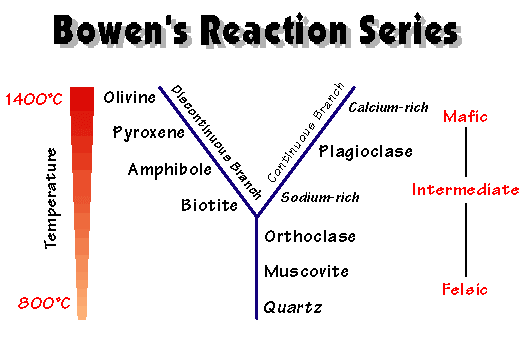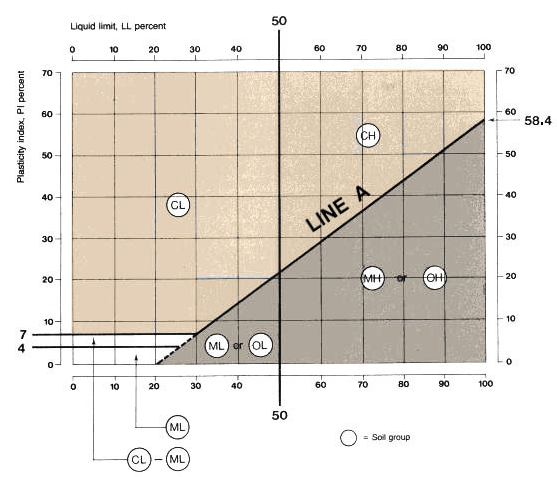Question :
This assessment will cover following questions:
- Generate an overview on the types of rock, how it is formed and civil engineering
- Discuss the classification of soil to current codes of practice
- What are the various soil properties as depicted by the geotechnical procedures
- Draw a proposal to mention the weakness and problems associated with the geotechnical.
Answer :
TAKS 1
(a) Three main classes of rock and main features of their formation
There are three main classes of rocks:
Igneous rock: These types of rocks are formed through cooling and solidification of magma which is also known as magma (Stoops, Marcelino and Mees, 2018).
- Sedimentary rock: These types of rocks are formed when sediments are deposited out of ice, air, gravity, wind or water flows carrying various particles in suspension.
- Metamorphic rock: These types of rocks are formed by chemical and physical alteration of pressure and heat of existing sedimentary or igneous material into their denser form.
(b) Examples of ways in which types of rocks are used in construction
Igneous rock
- Granite: It is used in architectural construction, monuments.
- Pumice: It is used as an additive in cements or for plaster like concrete.
- Gabbro: It is used as a crushed stone for road metal, railroad ballast.
- Basalt: it is mostly used as an aggregate in construction projects.
Sedimentary rock
- Coal: It is mainly used in powerplant in order to make electricity.
- Shale: it is used to make bricks or any other construction material such as cement.
- Conglomerate: it is mainly used to as a fill material for roads and construction.
- Sandstone: Used in pre historic construction and was popular in ancient time building materials.
Metamorphic rock
- Schist: In construction it is used as a building stone or decorative stone.
- Gneiss: In construction it is used for flooring, facing stones etc.
- Quartzite: In construction it is used as decorative stone for cover walls etc.
- Marble: In construction it is also used as building stones (Borrelli and et.al., 2016).
(c) Bowen Series of rock classification and extent till which it can explain weathering characteristics of rocks
Bowen Series of rock classification is also known as Bowen reaction series. It helps in describing way in which magma minerals changes when they cool down. It helps in classification of igneous rocks (Zagórski and Kisiel, 2018). It can help in explaining weathering characteristics of igneous rock. It helps in explaining the way in which magma minerals changes when they cool down.

Figure 1 Bowen reaction series
(d) Most important mechanical characteristics of rocks used in the following situations
1. As foundations for roads: Stones used in this situation are required to have high abrasive resistance, should be uniform and composition.
2. As facings for structures: For this mostly sedimentary rock are used whose strength and stiffness reduces slowly. Strengths and weakens of these kinds of rocks can be conforming pressure on them.
3. As aggregate for concrete: stones used in this situation should be highly durable, strength of these stones should be high
4. As building stone: Rocks used in building stones should have high compressive strength, transverse strength should also be high and porosity should be low.
Students Also Look For : Life Cycle Assessment Module
(e) Outline where soil is used as a construction material and compare this with alternative materials that could be used such as in a dam
Soil is used for building materials like bricks, cement. Other than this it can also be used for building materials such as wood boards, insulation fibres (Chertov and Nadporozhskaya, 2018). Many times, soils are caked and dried to make bricks. Alternative that can be used instead of soil are granular filters, rockfill materials etc.
(f) Difference in strength between rock mass and the same material taken out of a quarry
Strength of 20% material taken out of quarry have average comparative strength and as the value of these materials increases strengths of these materials also increases whereas strength of rock masses a be determined by identifying discontinuities in rock masses.
(g) Ways in which it is shown in RQD assessment of rock strength
RQD is a kind of measure through which degree of jointing in rock masses is measured or is measured as percentage of drill core in length (Monged, Hussein and Khater, 2018). In other words, it is used to measure the overall quality of rock masses. It is used to evaluate deformation of modulus and compressive strength or rock. If rock masses is rough then it helps in measuring degree of fractures in rock. It also helps in measuring quality of RQD i.e. high-quality rocks has more RQD whereas low quality has low.
TAKS 2
(a) Brownfield site and ways in which it differs from other sites
Brownfield sites are previously developed lands that are not used currently irrespective of the fact that they are contaminated or not. These are normally abandoned areas of towns or cities that have either been used for commercial purposes or industrial purposes previously (Bloise and et.al., 2016). These types of sites are completely different from other types of sites such as greenfield sites as other sites are undeveloped and can be used for agriculture also other than construction whereas Brownfield sites can only be used for construction.
(b) Ways in which one would approach a ground survey in a brown filed site and show ways in which it might differ from a ground survey on other sites
1. Ground survey in a brownfield site: in this ground risk is calculated so that risk and unexpected cost related to that site can be calculated. For these sites mostly construction surveys are only done.
2. Ground survey in other site: Other sites all other kinds of ground surveys can be done such as boundary survey, topographic surveys, construction survey, bathymetric or Hydrographic surveys can be done (Kassai and Sisák, 2018).
(c) Difference between a disturbed and an undisturbed soil sample
| Distributed Soil sample | Undistributed soil sample |
| · Change in stress condition · There is change in void ration and water content · Chemical changes are found in this |
· Due to disturbance in soil structure there is no change in soil condition · No change in void ration and water content · No changes in chemical properties. |
(d) Laboratory tests that can be done only on undisturbed samples
Laboratory test that can only be done on undistributed samples CBR or unconfined com-pression tests. These are used to test moisture to the desired dry density in special cylindrical moulds (Vrščaj and Kralj, 2017). Other than this compressibility or strength testing is done only in undistributed testing. Geology age testing of undistributed soil is also done only in this type of soil
(e) Ways in which soils are classified
Soils are broadly classified under various categories but mainly used classification are:
- Based on grain size: in this on the basis of grain size or particle size soil is classified. Under this classification nature of the soil type cannot be defined.
- Textural classification: in this soil is classified on the basis of particle size and their percentage of distribution. As per this classification name of soil depends upon percentage of sand, clay and silt.
- Unified soil classification: in this classification is done on the basis of plasticity characteristics of soil and grain size.
(f)Ways in which plasticity used in the classification of soils
Plasticity of a soil is determined from plasticity index and liquid limit. Each type of sol sample is plotted on modern plasticity chart and according to this chart soil are classified as per their representation point (Zinck, 2016). So, it can be said that in order to classify soil on the basis of plasticity it is required to conduct a test on soil sample.

Figure 2 Plasticity chart and soil classification
(g) sampling of soil in situ with examples of measurement of bulk density and also of shear strength
Sampling of soil in situ is used for investigating soil where an instrument is placed in borehole to measure situ characteristics of a soil or a rock. Sample of soils in situ used for testing bulk density depends upon soil texture. It is important to investigate type of soil texture so that bulk density can be measured (Espinosa, Moreno and Bernal, 2018). There are two methods to investigate bulk density of soil sample: core method which is used to test cores fragments that occupy less than 25% by volume and second is excavation method used for gravelly soil. Sher strength of undistributed soil can be measured by measuring the overall strength of natural soil.
(h) Relative merits of in situ testing and laboratory
Merits of in situ testing are:
- this type of test is carried out in natural environment which can help in determining modification and effects to strains, stress, particle arrangements.
- Helps in detection of planes of weakness, defects are more likely and practical
Merits of laboratory testing are:
- While testing, testing environment is in control so that intensity level can be controlled.
- Provides proper relative density and strength of the soil sample (Grove and Brown, 2018).
(i) Soil sampling needed in a soil survey on a site and dangers of too little or too much sampling
Soil samples should be taken to a depth of 2 meters, so each soil horizon is tested till a certain depth. If water depth is found in depth which is less than 2 meters then soil samples are taken as deep as possible.
Too little soil samples can lead to unwanted results or extremely high soil test results. It is dangerous because it can lead to wrong or false results whereas too deep soil sample can disturb the test results above expectations and might overestimate the soil nutrients.
TAKS 3
(a) measure the following from an in-situ sample
- soil moisture content: it can be calculated by subtracting weight of dry soil from moist soil and by dividing weight of dry soil
- bulk density: it can be calculated using three methods mechanical core sampler, acoustic sensor and nuclear radiation sensor (Fichter and Whitmeyer, 2019).
- specific gravity: for this ratio of volume of sample at standard temperature and weight in air of same volume of distilled water at same temperature.
(b) method of measuring shear strength in-situ and one method used in the laboratory and limitations of this test with respect to the type of soil under test
Method of measuring shear strength in-situ is known as vane shear testing. It is used to test undrained shear strength of the soil. Method used in laboratory to measure shear strength is Vane Shear Test. However, this test has some limitations with respect to type of soil used for testing like it is not suitable for fissured clay type soil or soil that contain sand or slit lamination as these types of sands won’t give accurate results.
(c) Ways in which soil compressibility is measured in the laboratory and importance of time in this measurement
Soil compressibility in laboratory is measured using oedometer or consolido-meter (Ma and et.al., 2017). For using this device for measurement of soil compressibility time plays a vital role as in this time to time, time deflation plots are measured. If the soil is kept for longer duration of time then thickness soil deposition increases.
Related Services : Case Study Help
(d) principle behind the California Bearing Test
It is a measurement of material resistance to penetration of standard plunger under controlled density and moisture conditions (Prothero, 2017). Some principles behind CBT testing are: Ph of soil depends upon difference in Soil and water ratio, extractable P increases with decreasing soil: water ration.
(e) Ways in which liquid limit and the plastic limit are measured in the laboratory and obtained from the laboratory tests carried out
Liquid limit test: in order to perform this test in laboratory following things are used: cup, flat grooving test, liquid limit device, ground glass plate, gage and cam. And while conducting the test following things are calculated: Mass of empty container, ass of container + wet soil, mass of container + dry soil and Water content and based on this liquid limit is calculated and a graph is plotted (Lin, 2016).
- Plastic limit test: in order to perform this test in laboratory following things are used: cup, flat grooving test, liquid limit device, ground glass plate, gage and cam. After testing plastic limit and plasticity index is calculated and a graph is plotted for appropriate measurement of results.
REFERENCES
- Bloise, A. and et.al., 2016. Naturally occurring asbestos (NOA) in rock and soil and relation with human activities: the monitoring example of selected sites in Calabria (southern Italy). Italian Journal of Geosciences. 135(2). pp.268-279.
- Borrelli, L and et.al., 2016. Weathering grade in granitoid rocks: the San Giovanni in Fiore area (Calabria, Italy). Journal of Maps. 12(2). pp.260-275.
- Chertov, O.G. and Nadporozhskaya, M.A., 2018. Humus Forms in Forest Soils: Concepts and Classifications. Eurasian soil science. 51(10). pp.1142-1153.
- Espinosa, J., Moreno, J. and Bernal, G. eds., 2018. The Soils of Ecuador. Springer.
- Fichter, L.S. and Whitmeyer, S.J., 2019. No Rock Is Accidental! Stratigraphy, Structure, and Tectonics in the Wilson Cycle. In Developments in Structural Geology and Tectonics (Vol. 5, pp. 145-160). Elsevier.
- Grove, T.L. and Brown, S.M., 2018. Magmatic processes leading to compositional diversity in igneous rocks: Bowen (1928) revisited. American Journal of Science. 318(1). pp.1-28.
- Kassai, P. and Sisák, I., 2018. The role of geology in the spatial prediction of soil properties in the watershed of Lake Balaton, Hungary. Geologia Croatica. 71(1). pp.29-39.
- Lin, N., 2016. Petrochemical characters of the igneous rocks exposed in the Momeik-Myitson area, Momeik Township, Northern Shan State.


























